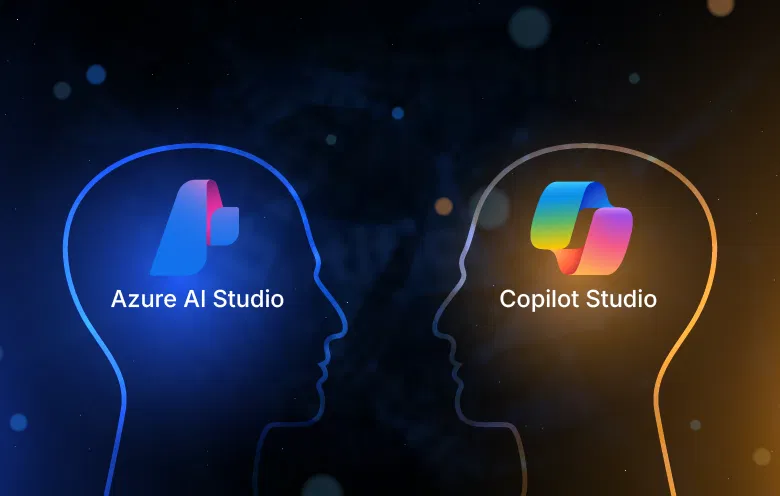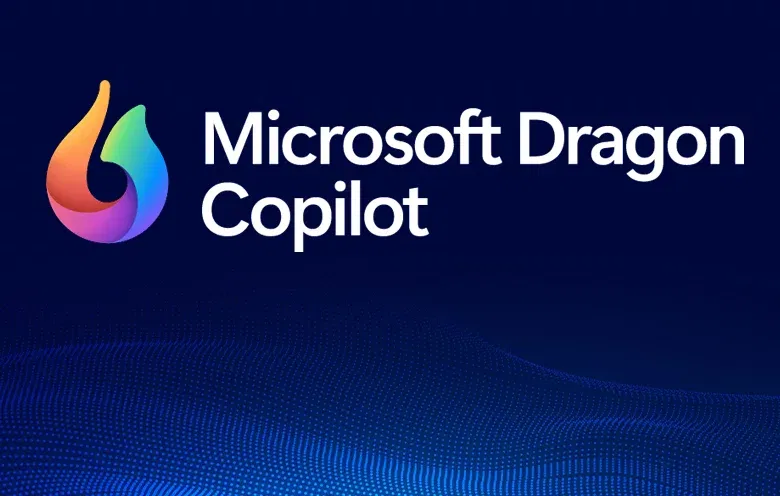Cross-platform app development is a software development approach that allows developers to create mobile, desktop, or web applications that can run on multiple operating systems and platforms using a single codebase. This approach aims to streamline the development process, reduce time and costs, and reach a broader audience by targeting various devices and platforms, such as iOS, Android, Windows, and web browsers, with a unified codebase. Cross-platform app development tools and frameworks like React Native, Flutter, Xamarin, and others facilitate this process, enabling developers to build apps that maintain a consistent look and feel across different platforms.
One significant evolution in this field is .NET MAUI, which stands for “.NET Multi-platform App UI.” It is the successor to Xamarin.Forms, a popular cross-platform development framework. .NET MAUI extends the capabilities of Xamarin.Forms by allowing developers to build native user interfaces for iOS, Android, Windows and macOS while sharing most of the application code. It simplifies cross-platform app development and offers a more unified and efficient way to create applications that run seamlessly across various platforms.
Why you must choose MAUI for cross-platform app development
Advantages of maintaining a single codebase for multiple platforms:
1. Cost-efficiency
Building separate codebases for different platforms can quickly become a resource-intensive endeavor. With .NET MAUI, you can significantly reduce development costs by using one codebase to target multiple platforms. Fewer resources are required for development, testing, and maintenance, which translates to substantial savings in both time and money.
2. Accelerated development
Time-to-market is often a critical factor in app development. Using .NET MAUI’s unified codebase, developers can expedite the development process. Changes, updates and bug fixes need only be made once. This streamlines the workflow and allows developers to focus on creating high-quality apps efficiently.
3. Consistency across platforms
One of the challenges of cross-platform development is achieving a consistent user experience across different devices and operating systems. .NET MAUI addresses this concern by enabling developers to maintain a uniform look and feel for their apps across all platforms. This consistency enhances user satisfaction and reduces potential confusion.
4. Easier maintenance
Managing multiple codebases can quickly become a logistical nightmare. It increases the risk of introducing platform-specific bugs and makes implementing updates and improvements a cumbersome process. A single codebase simplifies the maintenance process, allowing for quicker and more efficient updates and bug fixes.
5. Code reusability
With .NET MAUI, code reusability is a key advantage. Common business logic, data models, and APIs can be shared across platforms, minimizing redundancy and streamlining development efforts. This not only saves time but also helps ensure code consistency.
6. Wider audience reach
The diversity of devices and platforms available in today’s market is vast. By targeting multiple platforms with a single codebase, you can reach a broader audience. Whether your users are on iOS, Android, Windows, or web browsers, a unified codebase ensures that your app remains accessible to all.
7. Cross-platform tools and frameworks
.NET MAUI is part of a growing family of cross-platform development tools and frameworks that facilitate maintaining a single codebase. Frameworks like Xamarin.Forms and .NET MAUI make it easier for developers to create apps that look and perform well across various platforms.
8. Rapid updates and compatibility
In the fast-paced world of technology, platform updates and new device releases are commonplace. Maintaining a single codebase allows you to adapt quickly to these changes, ensuring your app remains compatible and competitive on the market.
.NET MAUI’s architecture improves app performance through several key mechanisms:
When it comes to developing cross-platform apps, performance is paramount. Slow or sluggish apps can lead to user frustration and negative reviews. That’s where .NET MAUI steps in with its architecture designed to significantly enhance app performance.
1. Single codebase efficiency
.NET MAUI reduces development overhead by maintaining a unified codebase for multiple platforms. This streamlined approach not only saves time and resources but also minimizes the potential for performance bottlenecks that can occur when managing multiple codebases.
2. Platform-specific renderers
.NET MAUI employs platform-specific renderers, allowing developers to customize the native user interfaces for each platform. This granular control ensures that UI components and interactions are highly performant and optimized for the specific characteristics of each target platform. It’s the best of both worlds: a consistent codebase and platform-specific optimizations.
3. Leveraging native performance
.NET MAUI apps leverage the native capabilities and performance optimizations of each platform. How does it work? By using native controls and platform-specific APIs, .NET MAUI ensures that your app runs efficiently and smoothly on iOS, Android, Windows, and macOS. This native approach translates into snappy, responsive and visually pleasing user experiences.
4. Ahead-of-time compilation
.NET MAUI employs ahead-of-time (AOT) compilation techniques, converting code into machine code before execution. This results in faster app startup times and better overall performance compared to just-in-time (JIT) compilation. Users appreciate apps that launch quickly, and .NET MAUI delivers on this front.
5. Optimized resource handling
Resource management is often an overlooked aspect of app performance. .NET MAUI allows for centralized management of shared resources like images, fonts and assets. This not only reduces redundancy but also optimizes memory usage, contributing to a more efficient app.
6. Efficient threading model
Performance isn’t just about visual responsiveness; it’s also about keeping your app running smoothly even during resource-intensive tasks. .NET MAUI provides a threading model that allows developers to offload time-consuming tasks to background threads while keeping the UI responsive. This prevents UI freezes and ensures a seamless user experience.
7. Performance profiling tools
To further bolster performance, .NET MAUI offers a set of performance profiling and debugging tools. These tools help developers identify bottlenecks and optimize their code for better performance, ensuring that their apps deliver top-notch performance in real-world scenarios.
Suggested: Why do you need to migrate from Xamarin to .NET MAUI?
The power of modern UI controls
Modern UI controls are the building blocks of intuitive and aesthetically pleasing user interfaces. .NET MAUI brings a robust selection of these controls to the table, making it easier than ever to craft engaging and visually appealing apps.
Buttons and navigation: .NET MAUI offers modern button styles, including floating action buttons, rounded buttons and customizable navigation bars. These controls not only look great but also contribute to an intuitive user experience.
Data grids and lists: Displaying data is a fundamental aspect of many apps. With .NET MAUI, you have access to flexible data grids and lists that allow you to present information elegantly, whether it’s in the form of a table, a list, or a card layout.
Charts and graphs: Visualizing data is essential for conveying information effectively. .NET MAUI includes chart controls that let you create interactive and visually appealing charts, graphs, and diagrams to engage users and convey complex data.
Text input and forms: Collecting user input is a core function of most apps. The framework provides modern text input controls and form elements that are not only user-friendly but also customizable to match your app’s branding.
Media elements: For apps that involve multimedia content, .NET MAUI offers modern media controls. These controls enable you to seamlessly integrate audio, video, and images into your app’s UI, enhancing user engagement.
Animations and transitions: Modern UI isn’t just about static elements; it’s about dynamic and interactive experiences. .NET MAUI supports animations and transitions, allowing you to create smooth and eye-catching interactions that captures users.
Flexibility for tailored interfaces
Flexibility is another hallmark of .NET MAUI’s UI controls. Developers can customize and adapt these controls to suit their app’s unique design requirements, ensuring that the UI aligns perfectly with the app’s brand identity.
Custom styling: .NET MAUI lets you apply custom styles to UI controls, ensuring they match your app’s visual theme. Whether you need to adhere to a corporate brand or create a unique user interface, flexibility is at your fingertips.
Platform-specific customization: While the framework promotes code-sharing across platforms, it also recognizes the need for platform-specific adjustments. .NET developers can tailor the appearance and behavior of controls to align with platform-specific design guidelines and user expectations.
Responsive design: With the growing diversity of device sizes and orientations, responsive design is crucial. .NET MAUI’s controls are designed to adapt gracefully to different screen sizes and orientations, ensuring a consistent and enjoyable user experience on various devices.
Accessibility: Inclusivity is a top priority for app developers. .NET MAUI’s UI controls are designed with accessibility in mind, ensuring that your app is usable by individuals with disabilities and compliant with accessibility standards.
Understanding Hot Reload
Hot Reload is a development feature that allows developers to make code changes while an app is running, and immediately see those changes reflected in the app’s user interface without the need for a full rebuild and redeployment. It effectively bridges the gap between writing code and observing its impact, resulting in a more streamlined and productive MAUI development workflow.
The power of full Hot Reload support
While Hot Reload has been available in Xamarin for a while, .NET MAUI takes it to the next level with full support. This means that not only does it work for extensible application markup language (XAML), the markup language used for designing user interfaces, but also for C# code.
Full Hot Reload support in .NET MAUI brings a host of benefits to app development. It enables real-time UI adjustments in XAML, accelerating UI design and fine-tuning. Changes in C# code are instantly visible, eliminating repetitive compilation cycles. Debugging becomes more efficient, with the ability to insert breakpoints and update code on the fly. Collaboration between developers and designers is enhanced, as UI elements can be fine-tuned in real-time. Additionally, the learning curve for developers transitioning from Xamarin to .NET MAUI is shortened, fostering quicker adaptation. Overall, Hot Reload boosts productivity by eliminating time-consuming build and deployment steps, significantly reducing development timelines.
.NET MAUI’s readiness for future cross-platform trends
Adaptability to emerging trends
.NET MAUI excels in adaptability, designed to evolve with industry trends seamlessly. Its modular architecture and extensibility empower developers to effortlessly integrate new libraries, features and platform updates, ensuring your app remains relevant as technology evolves.
Open-source community
.NET MAUI thrives, thanks to its vibrant open-source community, where global developers contribute to its evolution. This community-driven approach keeps the framework constantly updated and aligned with industry trends and best practices.
Integration into the .NET ecosystem
.NET MAUI is integral to the expansive .NET ecosystem, ensuring access to the latest technologies and trends. This integration guarantees compatibility with industry standards and empowers developers to harness the full potential of the .NET platform.
Compatibility with emerging technologies
.NET MAUI’s adaptability positions it to embrace emerging tech like AR, VR and IoT. With this, you can easily explore and integrate these technologies as they become prominent.
Microsoft’s commitment
Microsoft’s strong commitment to the .NET ecosystem ensures robust support for .NET MAUI. This ongoing support means that the framework will evolve in sync with industry changes, receiving updates and enhancements, making it a dependable choice for future-proofing your app.
Elevating app development: Why choosing .NET MAUI over Xamarin is future-proof
In the dynamic world of app development, your framework choice matters. Migrating Xamarin to .NET MAUI offers key advantages: a unified codebase for efficiency, modern UI controls for captivating interfaces, and a performance-oriented architecture with full Hot Reload support for rapid development and debugging. .NET MAUI development services are future-ready, adaptable to emerging trends, supported by an open-source community, integrated into the .NET ecosystem, and backed by Microsoft’s commitment. We encourage developers to explore .NET MAUI’s potential; it’s more than a framework—it’s your path to efficient, high-performance, and future-proofed mobile app development. Your app’s journey to success starts with .NET MAUI.



